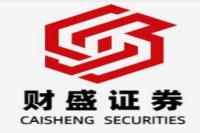Japan's Inflation: A Shifting Economic Landscape & The Bank of Japan's Response
Meta Description: Analyzing Japan's rising inflation, the Bank of Japan's potential interest rate hikes, the impact of energy subsidies, and future economic forecasts. Keywords: Japan Inflation, Bank of Japan, Interest Rates, Energy Subsidies, CPI, Economic Forecast.
Whoa, hold on to your hats, folks! Japan's economy is heating up, and not just because of the amazing ramen! We're talking about inflation, a topic that's usually as thrilling as watching paint dry, but trust me, this is anything but boring. Recent figures show a surge in Japan's inflation rate, prompting a flurry of speculation about the Bank of Japan's (BOJ) next move. Will they hike interest rates? Will this impact the global economy? This isn't just another dry economic report; it's a pivotal moment for Japan, and understanding the nuances is key to grasping its potential impact on global markets. We'll delve into the complexities of Japan's inflation, exploring the role of energy subsidies, the BOJ's cautious approach, and what this all means for the average Japanese citizen, from the bustling streets of Tokyo to the serene countryside. This isn't just about numbers on a spreadsheet - it's about real people, real businesses, and the future of a nation known for its economic prowess. So buckle up, because this deep dive promises to unravel the enigma of Japan's inflationary rollercoaster and reveal the potential for significant shifts in its economic trajectory. Get ready to navigate the intricate details, understand the implications, and perhaps even predict the future – let's unpack it all together! This isn't just an article; it's your key to understanding the current state of Japan's economy.
Japan Inflation: Unpacking the Numbers
The recent increase in Japan's inflation rate, primarily driven by the phasing out of energy subsidies on electricity and natural gas, has sent ripples through the economic world. According to Capital Economics, this surge is a significant factor that could bolster the BOJ's confidence in raising interest rates in the coming months. But it's not as simple as just looking at the headline inflation number. We need to dig deeper.
The overall inflation figure, while eye-catching, doesn't tell the whole story. As Toh Au Yu, an assistant economist at Capital Economics, points out, a significant portion of this increase is directly attributable to the reduction of government subsidies. This is a crucial distinction because it highlights the temporary nature of this inflationary pressure. Once we peel back the layers, we see a more nuanced picture.
The Role of Energy Subsidies:
The Japanese government's energy subsidies acted as a crucial buffer against inflation for a considerable period. Their removal, while necessary for long-term fiscal stability, has inevitably led to a noticeable price increase in utilities. This is a classic example of a temporary shock to the system, not necessarily indicative of underlying economic strength or weakness.
| Subsidy Type | Impact on Inflation | Long-Term Implications |
|------------------------|----------------------|-------------------------|
| Electricity Subsidies | Significant Increase | Reduced government spending |
| Natural Gas Subsidies | Significant Increase | Increased consumer energy costs |
| Renewable Energy Subsidies | Potential Decrease | Increased investment in renewables, long-term cost reduction|
This temporary surge is a crucial point to remember when analyzing the broader economic situation. It's a short-term blip that shouldn't overshadow the underlying indicators of the Japanese economy.
The supplementary budget planned for next year, however, offers a glimmer of hope. It proposes increased subsidies for renewable energy sources, potentially mitigating the impact of rising energy costs in the long run. This strategic move shows a proactive approach from the government to manage inflation without resorting to drastic and potentially harmful interest rate hikes.
Core Inflation: A More Accurate Reflection?
While headline inflation grabs the headlines, core inflation provides a more stable and revealing picture of the underlying inflationary pressures within the Japanese economy. Core inflation excludes volatile components like fresh food and energy prices, offering a clearer view of sustained price increases.
Over the past couple of years, excluding the occasional outlier month, core inflation has consistently remained at or above the BOJ's 2% target. This suggests that even without the recent surge in energy prices, underlying inflationary pressures are already present within the Japanese economy. This is a far more significant indicator than the headline inflation rate, which is very susceptible to short-term policy changes.
The Bank of Japan's Cautious Approach
The BOJ, known for its ultra-loose monetary policy, has hinted at a more cautious approach. They've indicated a desire for greater clarity before making any significant interest rate adjustments, particularly regarding the labor market. The recent CPI data, however, might tip the scales. The BOJ is walking a tightrope, balancing the need to control inflation with the potential negative consequences of raising interest rates too aggressively.
The BOJ's cautious approach is understandable. Raising interest rates too quickly could stifle economic growth, potentially leading to a recession. They are carefully considering all aspects before making a decision that could have profound implications for the Japanese economy and the global financial landscape. The delicate balance between preventing inflation from spiralling out of control and supporting economic growth is the primary challenge facing the BOJ.
Looking Ahead: Predictions and Potential Scenarios
Predicting the future is always a risky business, particularly in the volatile world of economics. However, based on the current data and the BOJ's cautious stance, several potential scenarios are worth considering.
-
Scenario 1: Gradual Interest Rate Hikes: The most likely scenario involves the BOJ gradually raising interest rates over the next year or two. This measured approach would allow them to monitor the impact on the economy and adjust their policy accordingly. This is a strategic approach minimizing potential economic disruptions
-
Scenario 2: Maintaining the Status Quo: The BOJ might decide to maintain its current ultra-loose monetary policy for a longer period, hoping that inflationary pressures will subside naturally. This approach carries risks, as sustained high inflation could erode consumer confidence and lead to economic instability.
-
Scenario 3: Aggressive Interest Rate Hikes: While less likely, the BOJ might opt for a more aggressive approach if inflation continues to rise sharply. This could have negative consequences on economic growth but might be necessary to control runaway inflation.
The actual outcome will depend on various factors, including global economic conditions, the evolution of the Japanese labor market, and the success of the government's efforts to manage energy prices.
Frequently Asked Questions (FAQs)
Q1: What is causing the rise in Japan's inflation?
A1: The primary driver is the phasing out of government subsidies on electricity and natural gas. However, underlying core inflation, excluding these volatile factors, has also been consistently above the BOJ's target for some time.
Q2: Will the Bank of Japan raise interest rates?
A2: The BOJ has indicated a cautious approach, preferring more clarity on the labor market before making a decision. While a rate hike is a possibility, the timing and magnitude remain uncertain.
Q3: What is core inflation, and why is it important?
A3: Core inflation excludes volatile components like food and energy prices, providing a more accurate reflection of underlying inflationary pressures. It offers a clearer view of sustained price increases.
Q4: What impact will the removal of energy subsidies have on the Japanese economy?
A4: The removal of subsidies has led to a noticeable increase in energy costs for consumers and businesses. However, the planned increase in renewable energy subsidies might mitigate this impact in the long term.
Q5: How will rising inflation affect the average Japanese citizen?
A5: Rising inflation erodes purchasing power, making everyday goods and services more expensive. This can lead to reduced consumer spending and potentially impact economic growth.
Q6: What are the potential risks of the Bank of Japan raising interest rates?
A6: Raising interest rates too quickly could stifle economic growth and potentially lead to a recession. The BOJ needs to carefully balance inflation control with the need for sustainable economic growth.
Conclusion: Navigating Uncertain Waters
Japan's economic landscape is currently navigating uncertain waters. The rise in inflation, driven partly by the removal of energy subsidies, presents a significant challenge for the Bank of Japan. While the recent CPI data might push the BOJ towards raising interest rates, a cautious approach is anticipated, balancing the need to control inflation with the potential risks to economic growth. The coming months will be crucial in determining the path forward, with the BOJ carefully monitoring various economic indicators before making any significant policy adjustments. The interplay between government policy, energy prices, and the BOJ's actions will ultimately shape Japan's economic future and its place in the global economy. Stay tuned – this is a story that is still unfolding.



